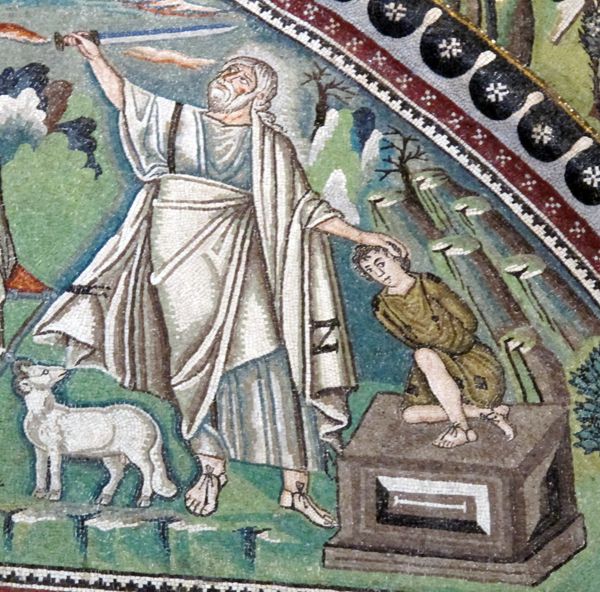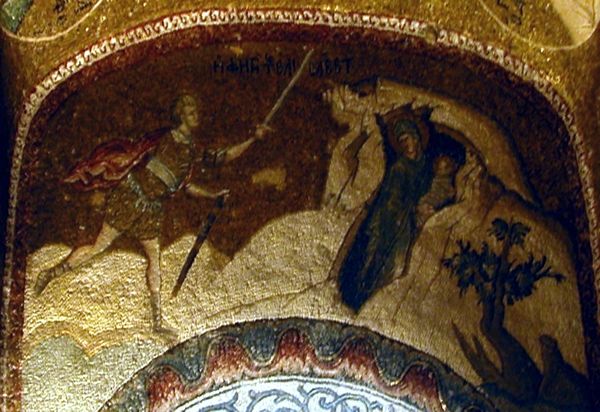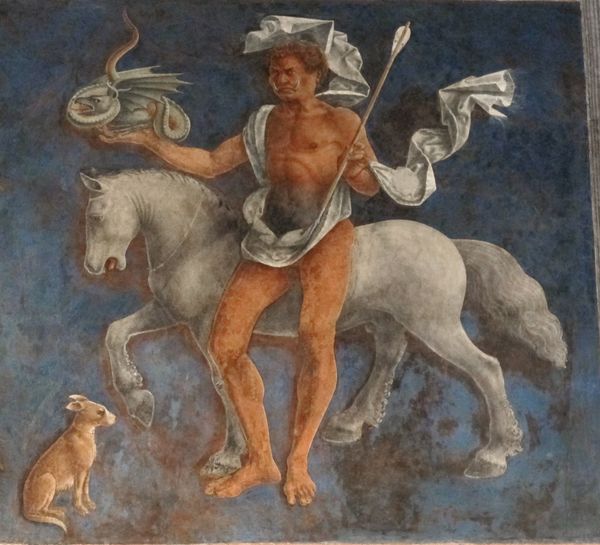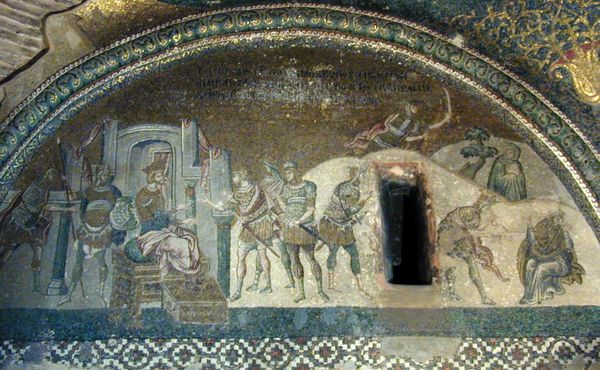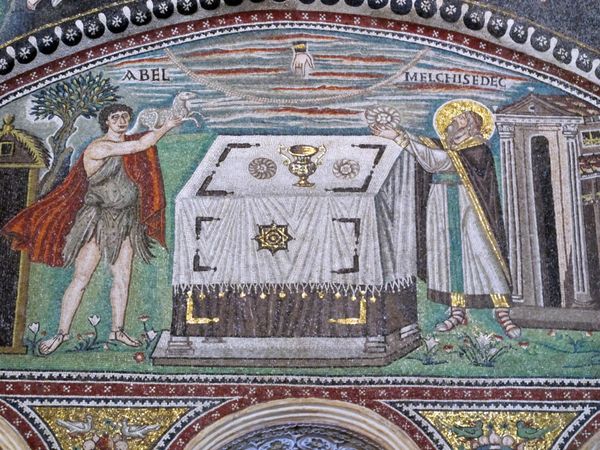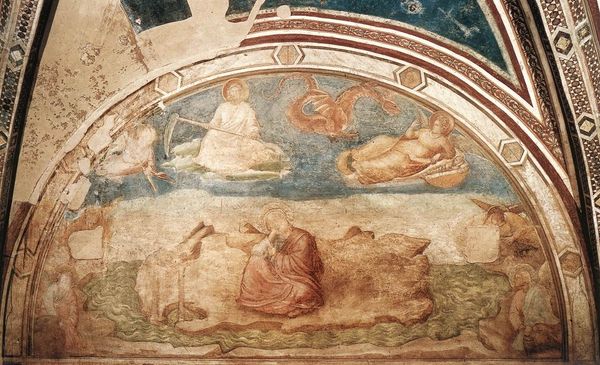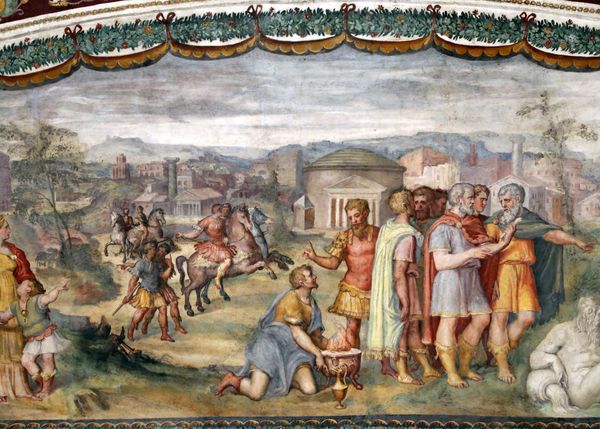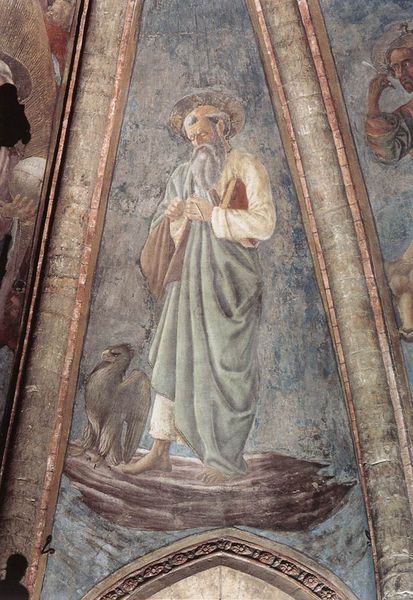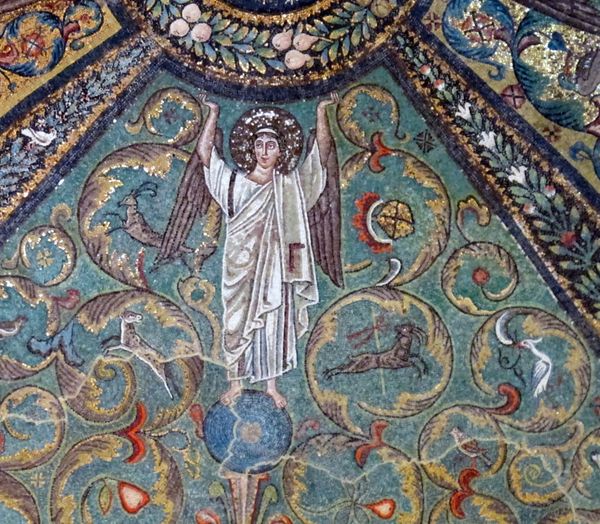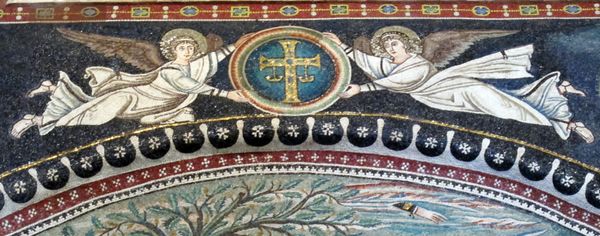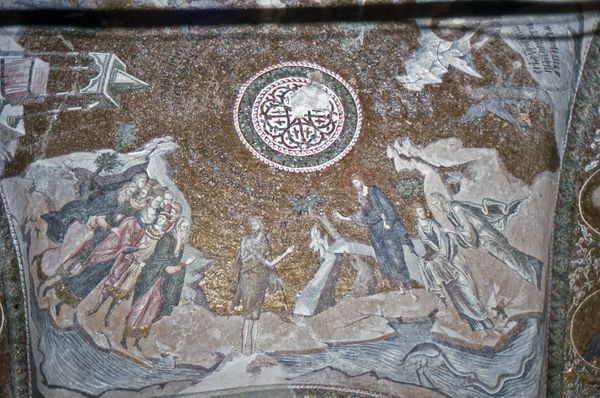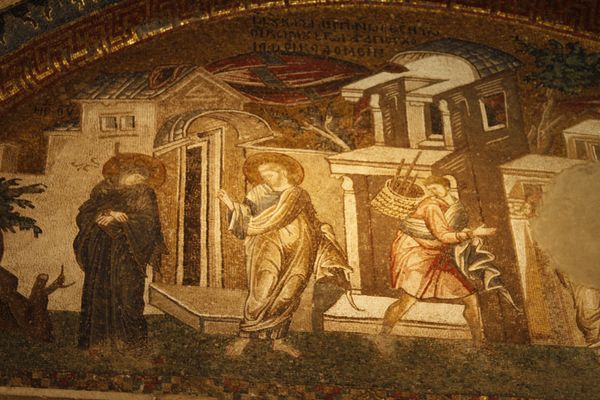
mosaic, glass
#
mosaic
#
byzantine-art
#
narrative-art
#
landscape
#
figuration
#
glass
Copyright: Public domain
This glittering semi-dome, located in the Mausoleum of Galla Placidia, was made by Byzantine mosaicists with tesserae, small colored stone or glass pieces. The mosaic’s impact resides in its intricate construction; each tiny piece carefully placed, reflecting light and creating a shimmering effect. The skilled labor required for such work was significant, involving teams of artisans who specialized in different aspects of the mosaic-making process. From quarrying and cutting the stones, to designing the composition and setting the tesserae, the creation of a mosaic like this was a major undertaking. The choice of materials is also significant. Unlike painting, which can be executed relatively quickly by a single artist, mosaic is a slow, painstaking medium that requires a collective effort. This inherently social aspect of mosaic-making reflects the values of the Byzantine era, where communal labor and craftsmanship were highly esteemed. Consider the level of human work involved in the production, and the symbolic meaning layered within its enduring presence. By valuing the work of making, the boundaries between craft and fine art become blurred.
Comments
No comments
Be the first to comment and join the conversation on the ultimate creative platform.

